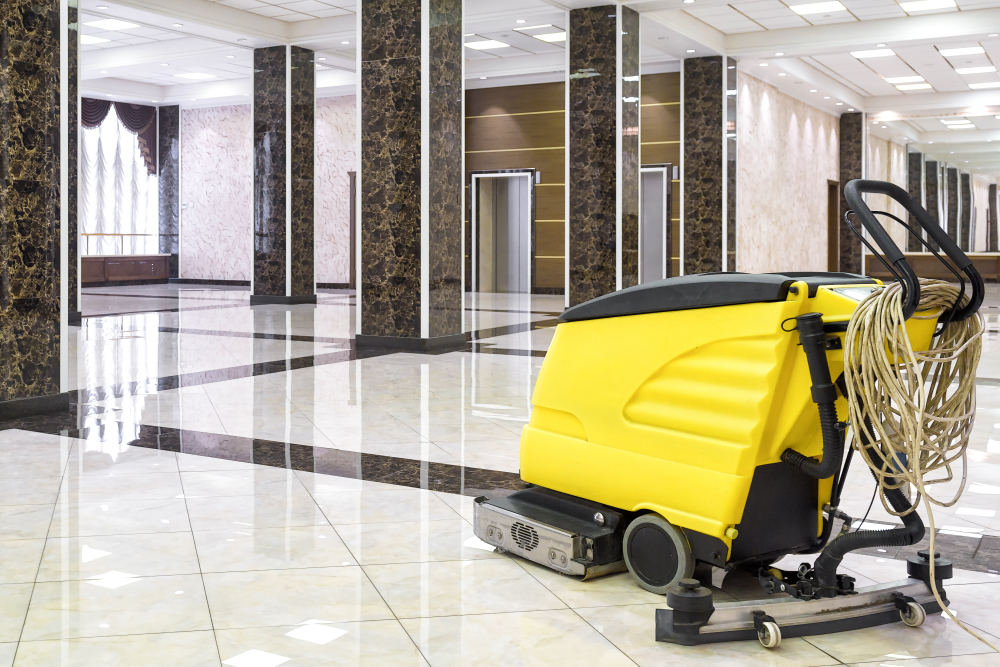Stone floors add a unique and professional design feature to a commercial space. In addition to being beautiful, they are solid and long-lasting if cared for properly. But maintaining this hard stone flooring can be more complex than you would think. Understanding the kind of flooring material(s) you have and their specific needs can add to the longevity of your floors. Here are five tips to help you determine the best granite and marble upkeep plan.
- Identify the stone and the quality.
Hard stone floors come in many different varieties: granite, marble, quartzite, limestone—the list goes on. And even when you know the type, you must also determine how the stone was cut and finished. Some stones are harder and less prone to wear than others. You will also need to assess the quality of the installation and where your flooring may need some repair work or preventative maintenance. A professional can help you understand what kind of stone you have and your best options for upkeep.
- Consider impregnator treatments.
Depending on the characteristics of your stone, it could be susceptible to staining and wear if it is located in high-traffic areas. Specifically, if your floors could be exposed to water, coffee, or other spills, you should consider an impregnator treatment. An impregnator soaks into the stone but does not coat the surface. This helps protect the deeper parts of the stone that can become stained or water damaged while still allowing the stone to breathe.
- Avoid coatings.
While there are certain situations where a coating may be necessary to maintain the integrity of a stone, most stone floors do best without coatings. Waxes, acrylics, and other superficial coatings can increase the amount of maintenance your floors need. Natural polishing is often cheaper, less time-consuming, and more cost-effective. This natural process utilizes a polishing powder and water to buff out damage and grit to polish the floors into a uniform shine.
- Use a neutral cleaner.
Natural stone requires a high-quality neutral cleaner or specific stone soap. Acidic and alkaline cleaners cannot be used regularly on stone floors. While these floors do best when they are cleaned daily, using too much cleaner (or the wrong cleaner) can leave a film and cause the floors to look streaky or dull.
- Establish a daily maintenance plan.
The most crucial treatment for natural stone floors is daily dust mopping. Dust, dirt, and gritty buildup are some of the most destructive materials for your floors. Ensuring this debris is swept off your floors regularly will significantly decrease the maintenance these floors require. Using a clean, dry dust mop daily or several times a day can keep your floors looking their best and reduce your chance of needing expensive repairs.
These are our top tips for maintaining the luster and integrity of natural stone. Working with a professional team that deeply understands what these materials need to thrive can save you money by extending the life of your surfaces. At Prime Facility Maintenance, we are experts in maintaining all varieties of stone surface materials. We can help you develop a maintenance plan to keep your business looking its best.



